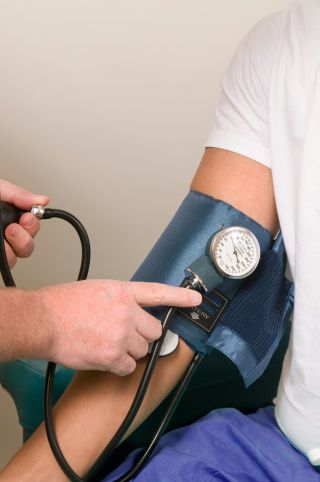Addiction
Staying Vigilant to Maintain Recovery from Addiction
Recurrent substance use is common. A watchful community can help prevent it.
Posted March 24, 2024 Reviewed by Abigail Fagan
Key points
- Like other chronic medical conditions such as hypertension, addiction is treatable, but not curable.
- Using substances again after a period of abstinence is common, yet predictable — and therefore preventable.
- Risk factors for recurrent use include cravings as well as mental and physical health comorbidities.
Addiction is a chronic medical condition. Like diabetes or high blood pressure, it can be controlled, but not cured. This does not mean that we ought to take a fatalistic view of alcohol and other drug use disorders, resigning ourselves to the belief that people with a history of addiction will inevitably go back to using. Rather, people in recovery and their loved ones should always be vigilant for early symptoms that may herald a recurrence of use. People with a history of addiction should also seek a longitudinal relationship with a healthcare provider whom they can trust to connect them with specialty treatment when needed, knowing that the need may arise at any time.
How Common Is Recurrence of Use After a Period of Recovery?
After a period of abstinence from alcohol or other drugs, life stressors often lead to cravings and recurrence of use. This phenomenon was formerly known as relapse; however, that term has fallen out of favor as it may promote stigma. Because recurrence of use is quite common, it is important that it be seen not as a failure on the part of the individual living with addiction, but rather as a part of the recovery journey – much like swings in blood sugar can be a part of the disease process in diabetes.
Rates of recurrence of substance use are comparable to those of uncontrolled blood sugar after an initial period of stabilization. A literature review found that one year after discharge from addiction treatment, between 40 and 60 percent of patients had not maintained abstinence. The review also noted that each year, between 30 and 50 percent of patients with type 1 diabetes experience recurrent symptoms that require medical attention to re-achieve remission. For high blood pressure and asthma, recurrence rates were even higher, at 50-70 percent per year. If we think of diabetes, hypertension, and asthma, as manageable conditions, it follows that we should view addictive disorders the same way. Symptom recurrence may be common, but it can be addressed with proper medical care.
What Medical Care Do Patients in Recovery Need?

As with other chronic medical conditions, a combination of monitoring on at least an annual basis by a primary care provider and ready access to specialty services when needed leads to optimal outcomes in addiction. This model is known as continuing care. A longitudinal analysis that studied 1,000 people following completion of a drug treatment program over a nine-year period found that those individuals who received continuing care were twice as likely to achieve remission, which they defined as abstinence or nonproblematic use, as those who did not.
This finding is striking, yet intuitive. Primary care is a cornerstone of detection and early intervention. In a patient with hypertension that was previously well controlled, a primary care provider may identify a borderline elevated blood pressure during a routine physical, prescribe medications, and arrange close follow up. If the medications are ineffective, they can refer the patient to a specialist—thereby preventing a hypertensive crisis or stroke. In the same way, by routinely checking in with patients in recovery, a primary care provider can pick up on symptoms of imminent recurrence of drug use, offer evidence-based pharmacotherapies, and connect the patient to specialty addiction treatment before they suffer an overdose or other adverse outcome.
Unlike hypertension, where we can measure a continuous variable and act at an early stage, with substance use, we do not have biomarkers that signal a recurrence before it happens. By the time a drug screen turns positive, the person has already used. Yet, it has been said in the recovery world that “relapse” occurs before the person uses the drug again. While this terminology is outdated, the concept remains instructive: return to use is predictable. Cravings may portend a return to substance use. Triggers for cravings include stress, family conflict, social pressure to drink or use drugs and, conversely, social isolation. Mental and physical health issues alike, from depression and anxiety to physical pain and poor overall health, can also threaten recovery. In this sense, abnormal lab results related to physical health comorbidities for a patient in recovery could portend a recurrence of use, as they may serve as an early warning that the patient is neglecting their self-care. Primary care providers can recognize these potential harbingers and open a discussion about maintaining recovery in the context of overall wellness. They can encourage self-monitoring, where the patient reports any symptoms that may jeopardize their recovery. It is also important that medical providers screen for cravings even when the patient appears to be doing well.
What Can Family and Loved Ones Do to Protect the Individual in Recovery?
Family members and other loved ones of the person in recovery can encourage the individual to follow up regularly with their provider for routine checkups. They can also speak up if the person shows signs of anxiety, depression, irritability, loneliness, or apathy. Active participation by loved ones can not only identify threats to a person’s sustained recovery, but it can also guard against those threats. Studies have shown that marital and family treatment is associated with better outcomes for alcohol use disorder than methods that do not involve a spouse or other family member. People in recovery from cocaine use who perceive higher levels of social support are less likely to return to use. Peers in the recovery community also play an instrumental role. Engagement in self-help groups such as Alcoholics Anonymous is associated with decreased alcohol consumption in both the short and long term.

The opposite of addiction is not merely abstinence, but rather, community. Sometimes an individual in recovery may not have returned to using drugs yet, but they are at imminent risk. A vigilant community that includes family, loved ones, peers, and a long-term primary care provider can monitor for this risk and ensure that the individual receives the support they need to maintain success in recovery.



